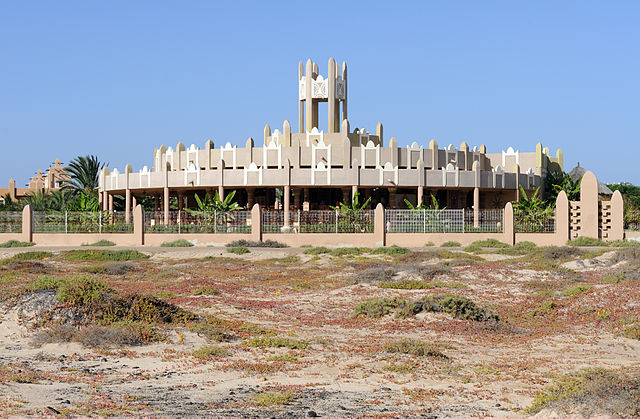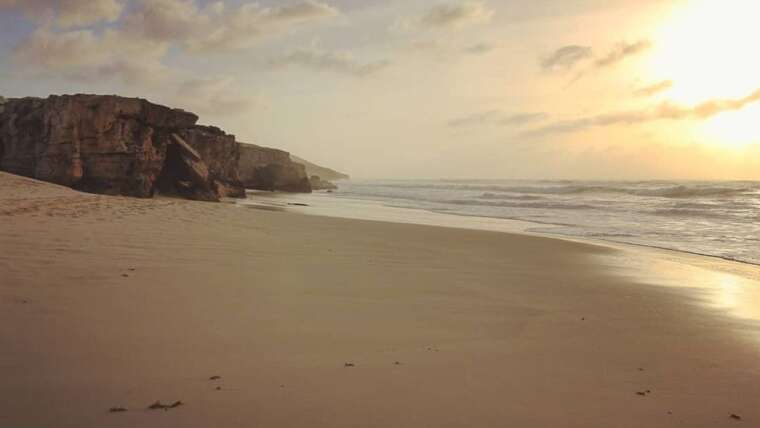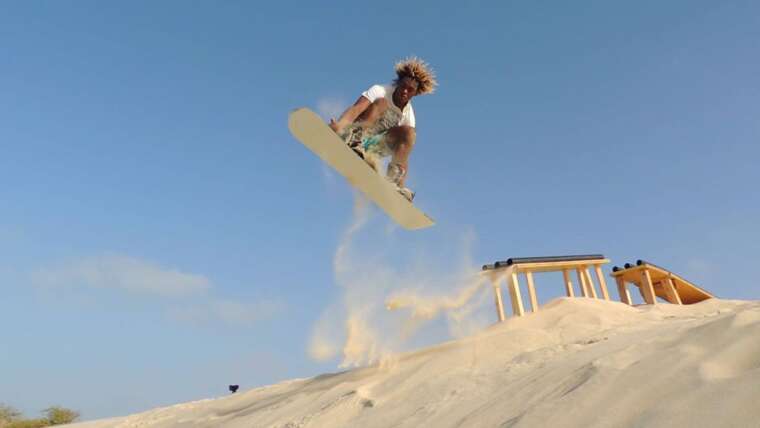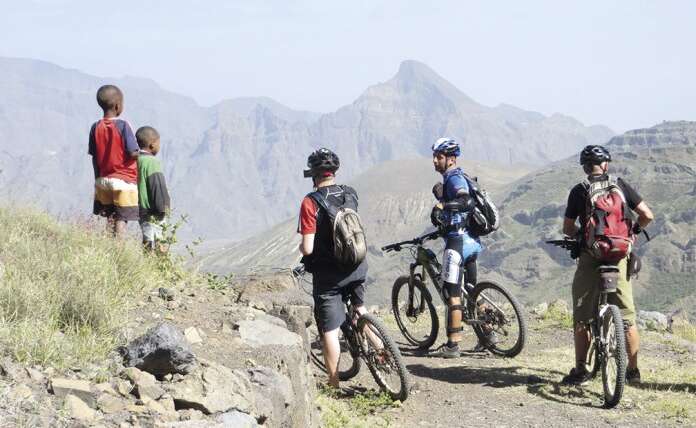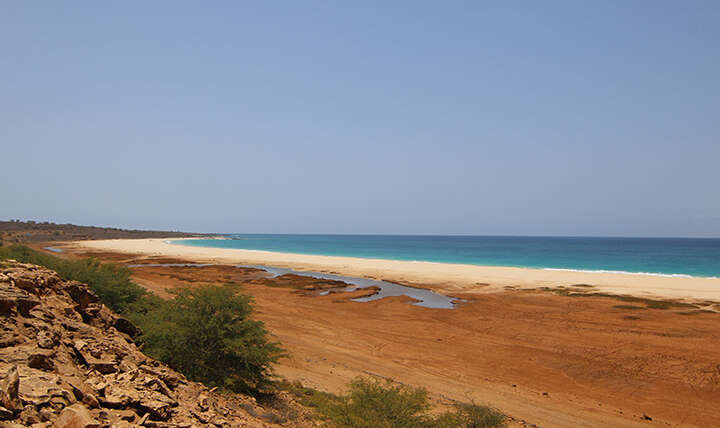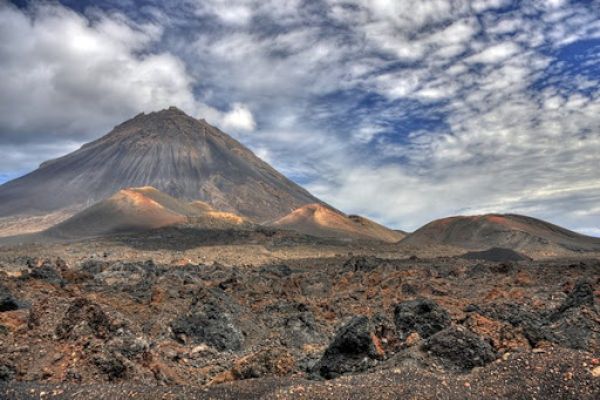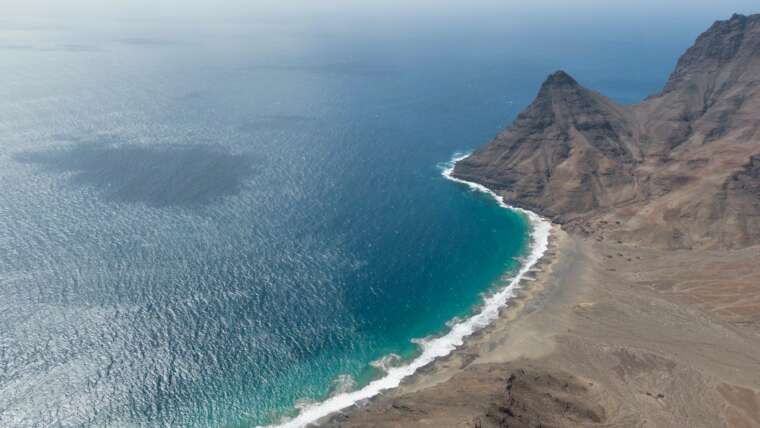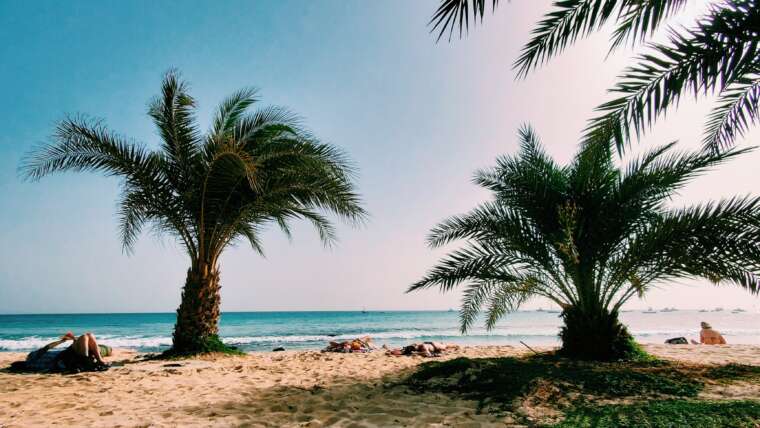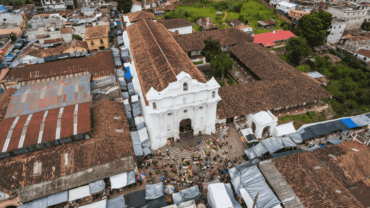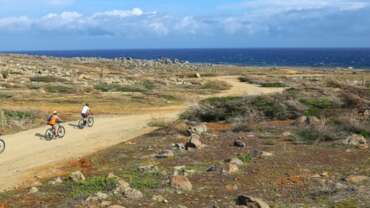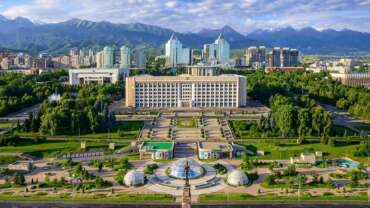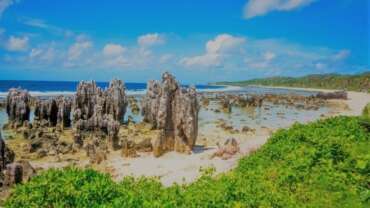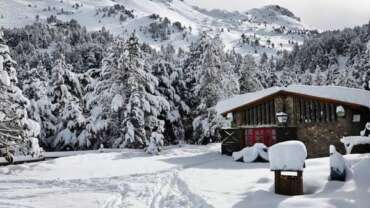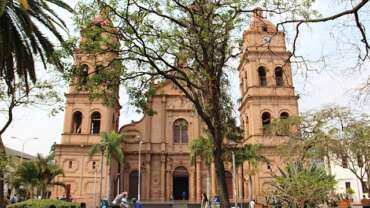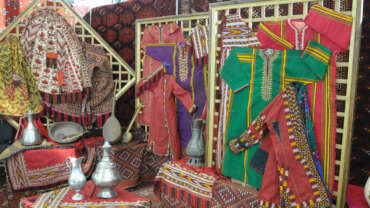Cape Verde - definitely my experience!
Cape Verde or Cabo Verde, officially the Republic of Cabo Verde, is an island country in the central Atlantic Ocean. The ten volcanic islands in its archipelago have a combined land area of about 4,033 square kilometres.
The Island of Boa Vista, Cape Verde
Being the 3rd largest in Cape Verde, the island of Boavista is about 620 km², 30 km in the north-south direction and 29 km wide, is almost round and mostly deserted, presenting a vast territory with breathtaking views, points of interest with tourist attractions, white and crystalline beaches, calm ocean, favorable climate and a quiet population living in a serene and peaceful way, away from the stress. In addition to the blue sky, fresh and clean air, tropical landscapes and paradisiacal beaches, the island has conditions for carrying out various sports activities (see the sports page), it also offers conditions for its exploration in organized and safe excursions or, if you want something less “radical”, choose one of the lush beaches, Beach Clubs or resorts on the island to be able to spend relaxing days.
Don’t settle for a pool or a cocktail if you come to a hotel. Boa Vista is for exploring, experiencing new flavors of local cuisine that is rich in fish and vegetables and dancing to the beat of good Cape Verdean music. While you marvel at the Cape Verdean reality, you can also meet incredible marine animals in their natural habitat (see page “Excursions”). If you want to spend time with the locals, you will discover the hospitality and kindness of Cape Verdeans and feel at home. Forget the rush, visit the portal that you will love the island.
History of Cape Verde
Early and colonial history
Although there is no conclusive evidence that the islands were inhabited before the arrival of the Portuguese, cases may be made for visits by Phoenicians, Moors, and Africans in previous centuries. It was Portuguese navigators such as Diogo Gomes and Diogo Afonso, Venetian explorer Alvise Ca’ da Mosto, and Genoese navigators such as António and Bartólomeu da Noli, however, who began to report on the islands in the mid-15th century, shortly before a plan of active colonization and settlement was launched.
In 1462 the first settlers from Portugal landed on São Tiago (Santiago), subsequently founding there the oldest European city in the tropics—Ribeira Grande (now Cidade Velha). Sugar was planted in an attempt to emulate the success of the earlier settlement of Madeira. Cabo Verde’s dry climate was less favourable, but, with the development of the transatlantic slave trade, the importance and wealth of the islands increased.
Cabo Verde served an increasingly important role as an offshore entrepôt with the development of the triangular trade, by which manufactured goods from Europe were traded for slaves, who were sold in turn to plantations in the New World in exchange for the raw materials produced there; with these the ships returned home. Cabo Verde was thus a centre for the trade of cheap manufactured items, firearms, rum, cloth, and the like in exchange for slaves, ivory, and gold. Cabo Verde was especially known for its pano cloths, usually constructed of six strips of fabric made from cotton that was grown, dyed dark indigo, and woven on narrow looms by slaves in Cabo Verde; the cloths were a valuable form of currency for the slave trade on the mainland. Tens of thousands of slaves were exported from the coast to the islands and then on to the New World, especially to northern Brazil.
Portuguese efforts to monopolize exploration and trade along the western African coast were disrupted by those who saw the potential of the wealth of Africa for their own interests, and smuggling was rife. Although the slave trade was controlled through the crown-issued monopoly contracts, in the late 16th century the English and Spanish began to wear away the Portuguese monopoly. In addition, the prosperity of Ribeira Grande attracted pirates, who attacked the city in 1541. The English later attacked it twice—in 1585 and 1592—the first time under the command of Sir Francis Drake. After a French attack in 1712, it was decided to move the capital to Praia. With the transfer officially complete in 1770, Ribeira Grande began its long slow decline.
The waning of the slave trade—the Portuguese rulers and merchants reluctantly abandoned the industry in 1876—coupled with increasing drought slowly sapped the islands’ prosperity. In the early 1800s Cabo Verde experienced not only recurrent drought and famine but government corruption and maladministration as well. In the mid-1850s the islands enjoyed a period of economic optimism as the age of steam replaced the age of sail, and large long-distance oceanic vessels needed strategic coaling stations such as Mindelo could provide. As a result, Cabo Verde was briefly the site of great port activity, before the opening of the Suez Canal in 1869 cut severely into this business. For the wider population there was little relief or improvement, and emigration from the islands became the norm: faced with the prospect of drought and starvation at home, the poorest Cabo Verdeans commonly traveled south to work as agricultural labourers picking bananas and cocoa beans in Sao Tome and Principe; others found maritime work on whaling ships.
Struggle for independence
The long-standing joint colonial administration of Cabo Verde and Guinea-Bissau was terminated in 1879, when both became separate Portuguese territories. Amid the contemporary African decolonization movement, their status was modified in 1951 to “overseas provinces,” and their inhabitants were officially granted full Portuguese citizenship in 1961. Not perceiving these changes as meaningful, however, some members of the colonial population began to agitate for complete independence from Portugal for both Guinea-Bissau and Cabo Verde. One such group, the African Party for the Independence of Guinea and Cabo Verde (Partido Africano da Independência da Guiné e Cabo Verde; PAIGC), was founded in Bissau in 1956 and headed by Amílcar Cabral, a gifted revolutionary leader and theoretician. Its goal was to achieve independence by using peaceful means of protest. In 1959, however, the Portuguese responded with violence and arrests, which convinced the PAIGC that only a path of armed struggle would be sufficient to end the colonial and fascist regime. After a period of military training and political preparation, the PAIGC launched its armed campaign in January 1963 and showed steady military progress thereafter. On January 20, 1973, Cabral was assassinated, and later that year, on September 24, Guinea-Bissau declared independence. This event—compounded by the other lengthy wars in Portuguese colonies—precipitated a crisis in Portugal that resulted in a successful coup there on April 25, 1974. Portugal’s new government soon began negotiating with African nationalist movements.
Independence
Full independence was achieved in Cabo Verde on July 5, 1975. Aristides Pereira, the PAIGC secretary-general, and Pedro Pires, a military commander, became the first president and prime minister, respectively. A military coup in Guinea-Bissau in 1980, deeply resented in Cabo Verde, broke the political unity between the two countries. The PAIGC subsequently split, with the Cabo Verdean branch thereafter known as the African Party for the Independence of Cabo Verde (Partido Africano para a Independência de Cabo Verde; PAICV). Pereira and Pires remained in power in the one-party state until PAICV dissidents were permitted to form a second party, the Movement for Democracy (Movimento para a Democracia; MpD), which was organized from as early as March 1990 and emerged victorious in the two-party elections of January 1991. In the presidential election held the following month, Antonio Mascarenhas Monteiro, backed by the MpD, won a decisive victory; he was reelected in February 1996 in an election marked by a low turnout and in which he was the only candidate.
During Monteiro’s tenure, the country continued to experience economic struggles, and both the MpD and the PAICV held the troubled economy to be their primary concern. During the legislative and presidential elections of 2001, the PAICV was returned to power, with Pires winning the second round of balloting to secure the presidency despite allegations of irregularities by his opponent, former prime minister Carlos Alberto Wahnon Carvalho Veiga. That same year food shortages—a common predicament for Cabo Verde—worsened considerably, and the government relied heavily on foreign aid and food imports to feed the country. Veiga and Pires faced each other once again in the presidential election of 2006, in which Pires—with diasporic support—very narrowly secured reelection. The constitution prohibited Pires from running for a third term, and in the 2011 presidential runoff election Jorge Carlos Fonseca of the MpD defeated Manuel Inocencio Sousa of the PAICV. In the National Assembly elections in March 2016, the PAICV lost the majority that it had held in the legislative body for some 15 years; the MpD won more than 50 percent of the vote. The PAICV did not field a candidate in the presidential election held later that year in October. Fonseca handily defeated two other candidates to win reelection, taking about three-fourths of the vote.
The poverty and high rates of unemployment that had plagued Cabo Verde in the 1990s continued into the 2000s, even as the government made strides in reaching economic goals. In the 21st century the country continued to successfully pursue political and economic relationships around the globe, courting foreign investors and creating and maintaining diplomatic ties in the international community. In October 2013 the government requested that the Portuguese version of the country’s name, Cabo Verde, be used as part of the country’s official name when it was rendered in other languages; previously, the rendition of the country’s official name had varied by language—such as the widely used English translation, Cape Verde.
People of Cape Verde
Ethnic groups
The overwhelming majority of the population of Cabo Verde is of mixed European and African descent and is often referred to as mestiço or Crioulo. There is also an African minority, which includes the Fulani (Fulbe), the Balante, and the Mandyako peoples. A small population of European origin includes those of Portuguese descent (especially from the Algarve, a historical province, and the Azores islands), as well as those of Italian, French, and English descent. There is also a substantial number that traces its roots to Sephardic Jews who were expelled from the Iberian Peninsula in the 15th and 16th centuries during the Inquisition and were among the islands’ early settlers, or to other groups of Jews—mainly tradesmen—who arrived in the 19th century from Morocco.
Languages
Although Portuguese is the official language and is used in formal situations, Crioulo, one of the oldest of the Portuguese creole languages, is by far the most widely spoken. The different dialects of Crioulo that exist on the islands may be broadly divided into Sotavento and Barlavento groups. There has been a struggle to legitimate and regularize Crioulo orthography in a dictionary and in schools.
Religion
The majority of the population is Roman Catholic, but a flourishing Protestant mission is based in Praia with a publishing venture in Fogo. In practice, Catholicism is often enriched with African elements. The celebration of saints’ days, for example, may be accompanied by drumming, processionals, masks, and dancing in African styles, particularly on Santiago. Although many Cabo Verdeans can trace Jewish ancestry, virtually none are practicing.
Art & Culture of Cape Verde
The arts
The cultural synthesis that forms Cabo Verdean artistic tradition is notable in the rich body of oral narratives known as Nho Lobo tales, for example, which include the characters of Ti Lobo and Chibinho, both of whom have their counterparts in western African folklore. Musical traditions from Africa are reborn in Cabo Verde as batuko (derived from the Portuguese verb meaning “to beat”), a genre that features polyrhythm and call and response performed by a group of women. European traditions are revealed in the morna, a lament comparable to the Portuguese fado, and the mazurka. Other styles include the funana, a fast-paced genre that features the gaita, an accordion-like instrument, and the finaçon, often performed by women in conjunction with a batuko session. Cesaria Evora, one of Cabo Verde’s most popular musicians, is famous both within the islands and abroad for her mornas and coladeras (mornas with a faster tempo).
Since the late 19th century, Cabo Verde has produced some outstanding writers and poets. Between 1936 and 1960 the cultural magazine Claridade (“Clarity”) was the centre of an artistic movement that marked a break with Portuguese literary traditions and established a Cabo Verdean identity. Baltasar Lopes da Silva, who used the pseudonym Osvaldo Alcântara for his poetry, and Eugénio Tavares are key figures from this period. Subsequent writers have extended the movement’s interest in the Crioulo culture to use that language as well as Portuguese.
Cultural Life
Although five centuries of Portuguese colonial culture have dominated the islands, traditions from Africa are also present. The two are much blended in the cultural life of Cabo Verde, evidence of which is apparent in the country’s literary, musical, and artistic production.
A number of the holidays celebrated in Cabo Verde—including Easter, the Feast of the Assumption, All Saints’ Day, and Christmas—reflect the country’s majority Roman Catholic tradition. Other holidays include National Heroes’ Day, Children’s Day, and Independence Day, which are observed on January 20, June 1, and July 5, respectively.
The perfect place for water sports!
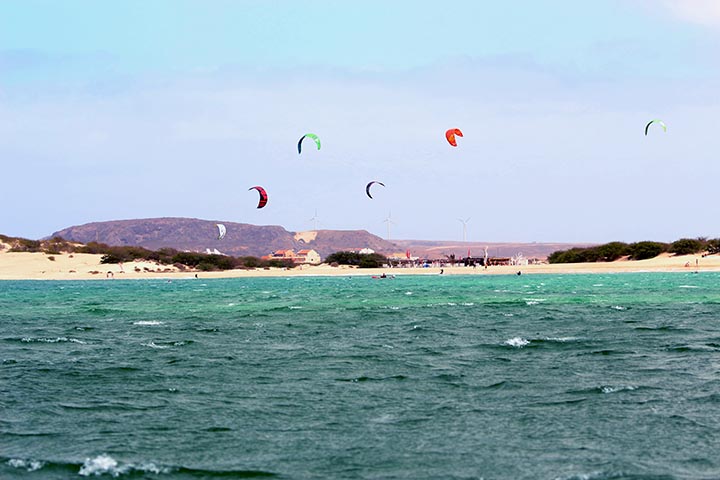
Boa Vista is a paradise for surfers from all over the world. Kite-surfing, Windsurfing, Snorkelling, diving, swimming, deep-sea fishing, are just some of the sports that are practiced every year by thousands of tourists and local citizens. Beginner classes are available at several professional schools and hotels. Some professional fishermen rent their own boats for trips on the high seas in search of abundant “memorable fishing”.
Every year Boavista is the protagonist of a marathon scenario. The most famous is the 150 km Ultramarathon, which runs from crystal clear beaches to the desert. On this website and in the Boavista Official application you can follow all information about schools, timetables, prices and regulations. The weather forecasts and webcam will give you an overview of the weather conditions. There is also detailed informations on transporting materials and personnel, and stores where you can buy sports equipment.



